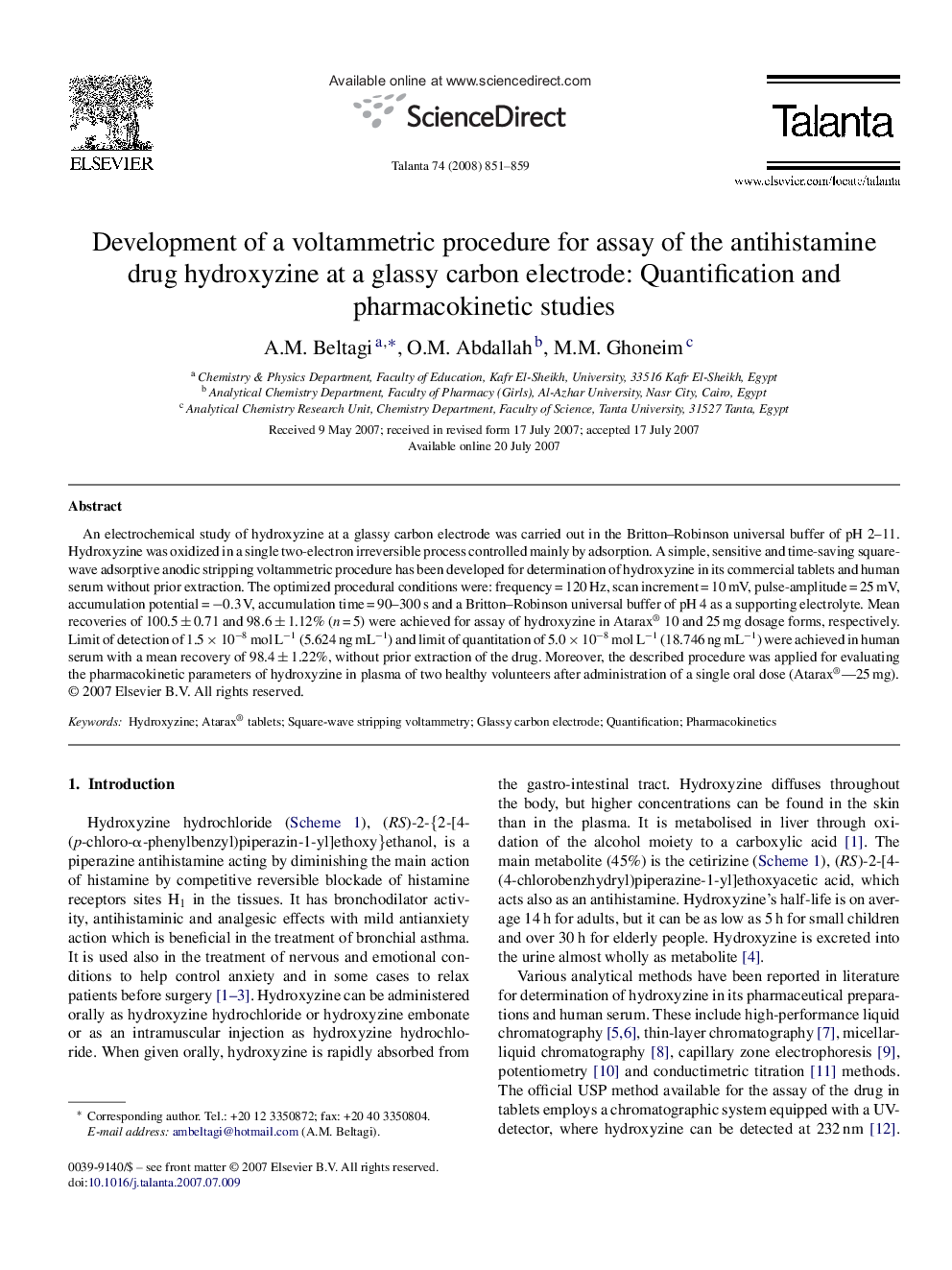| Article ID | Journal | Published Year | Pages | File Type |
|---|---|---|---|---|
| 1247127 | Talanta | 2008 | 9 Pages |
An electrochemical study of hydroxyzine at a glassy carbon electrode was carried out in the Britton–Robinson universal buffer of pH 2–11. Hydroxyzine was oxidized in a single two-electron irreversible process controlled mainly by adsorption. A simple, sensitive and time-saving square-wave adsorptive anodic stripping voltammetric procedure has been developed for determination of hydroxyzine in its commercial tablets and human serum without prior extraction. The optimized procedural conditions were: frequency = 120 Hz, scan increment = 10 mV, pulse-amplitude = 25 mV, accumulation potential = −0.3 V, accumulation time = 90–300 s and a Britton–Robinson universal buffer of pH 4 as a supporting electrolyte. Mean recoveries of 100.5 ± 0.71 and 98.6 ± 1.12% (n = 5) were achieved for assay of hydroxyzine in Atarax® 10 and 25 mg dosage forms, respectively. Limit of detection of 1.5 × 10−8 mol L−1 (5.624 ng mL−1) and limit of quantitation of 5.0 × 10−8 mol L−1 (18.746 ng mL−1) were achieved in human serum with a mean recovery of 98.4 ± 1.22%, without prior extraction of the drug. Moreover, the described procedure was applied for evaluating the pharmacokinetic parameters of hydroxyzine in plasma of two healthy volunteers after administration of a single oral dose (Atarax®—25 mg).
